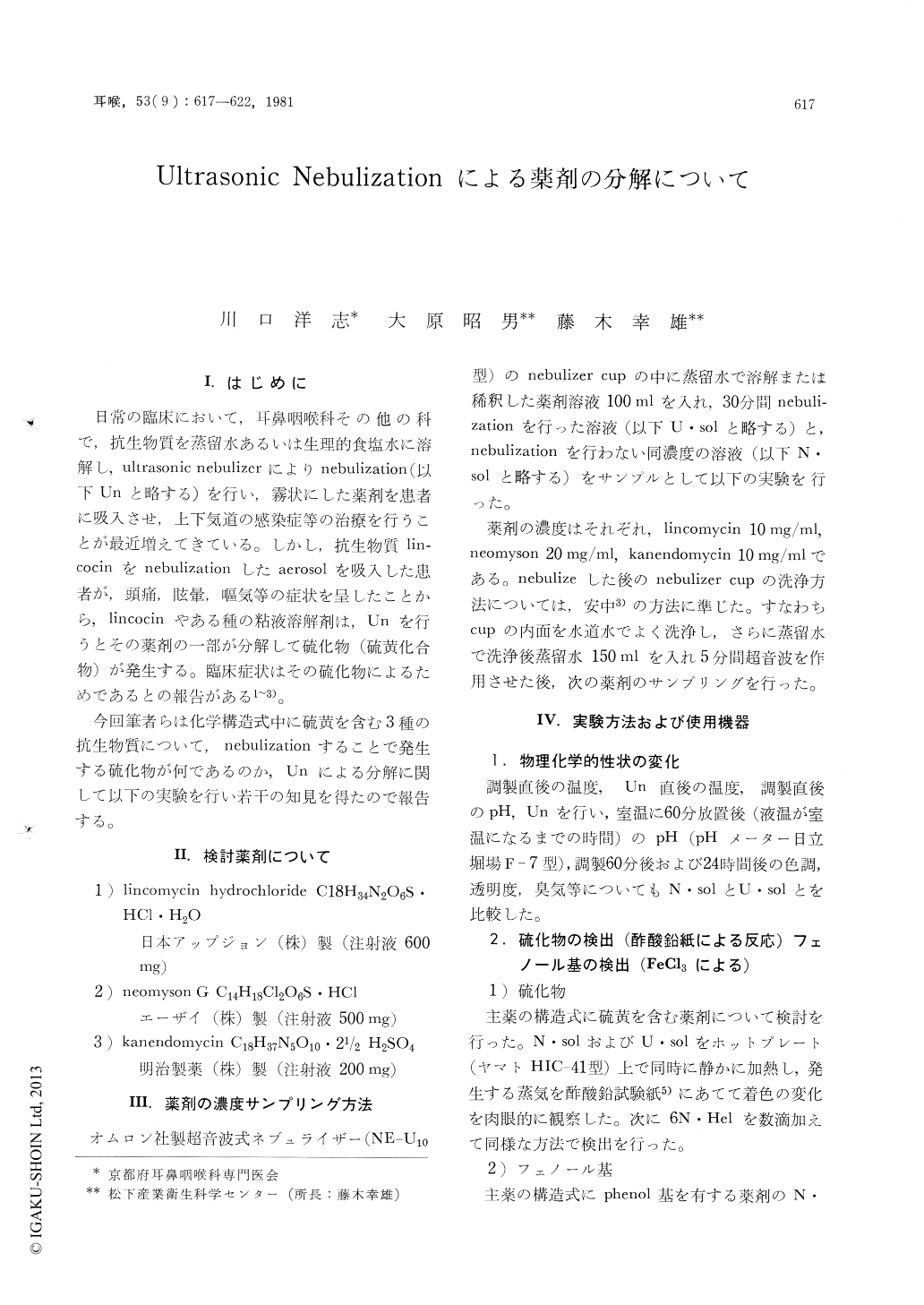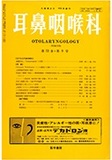Japanese
English
- 有料閲覧
- Abstract 文献概要
- 1ページ目 Look Inside
I.はじめに
日常の臨床において,耳鼻咽喉科その他の科で,抗生物質を蒸留水あるいは生理的食塩水に溶解し,ultrasonic nebulizerによりnebulization(以下Unと略する)を行い,霧状にした薬剤を患者に吸入させ,上下気道の感染症等の治療を行うことが最近増えてきている。しかし,抗生物質lincocinをnebulizationしたaerosolを吸入した患者が,頭痛,眩量,嘔気等の症状を呈したことから,lincocinやある種の粘液溶解剤は,Unを行うとその薬剤の一部が分解して硫化物(硫黄化合物)が発生する。臨床症状はその硫化物によるためであるとの報告がある1〜3)。
今回筆者らは化学構造式中に硫黄を含む3種の抗生物質について,nebulizationすることで発生する硫化物が何であるのか,Unによる分解に関して以下の実験を行い若干の知見を得たので報告する。
Solutions of lincomycin, kanendomycin and neomyson were nebulized using an ultrasonic nebulizer for thirty minutes, but their physicochemical properties showed no changes.
Poisonous gas in aerosol of lincomycin was foundto be dimethyl disulfid, and hydrogen sulfide by gas chromatography and mass spectrometry. Sulphuric compounds were not detected in aerosols of kanendomycin and neomyson.
Aerosols produced by the ultrasonic nebulizer must be inhalated carefully because of hazardous effects of degenerated or destructed grugs.

Copyright © 1981, Igaku-Shoin Ltd. All rights reserved.


